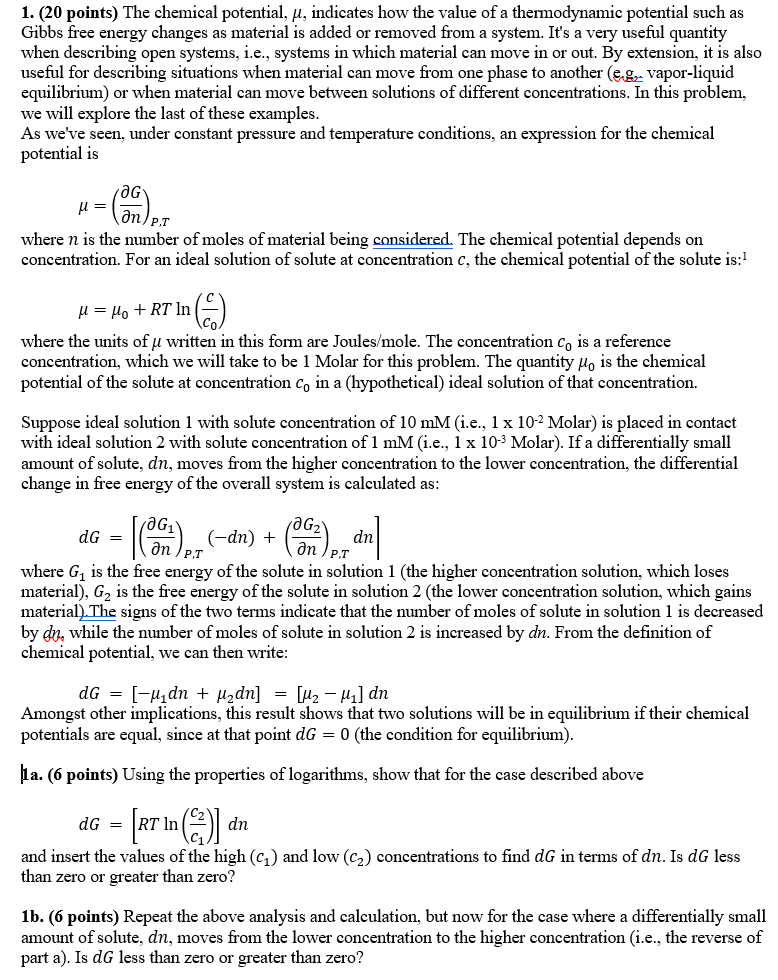
1. (20 points) The chemical potential, u, indicates how the value of a thermodynamic potential such as Gibbs free energy changes as material is added or removed from a system. It's a very useful quantity when describing open systems, i.e., systems in which material can move in or out. By extension, it is also useful for describing situations when material can move from one phase to another (eg, vapor-liquid equilibrium) or when material can move between solutions of different concentrations. In this problem, we will explore the last of these examples. As we've seen, under constant pressure and temperature conditions, an expression for the chemical potential is D et u= Com where n is the number of moles of material being considered. The chemical potential depends on concentration. For an ideal solution of solute at concentration c, the chemical potential of the solute is: H = Ho + RT In where the units of u written in this form are Joules/mole. The concentration Co is a reference concentration, which we will take to be 1 Molar for this problem. The quantity Mo is the chemical potential of the solute at concentration Co in a (hypothetical) ideal solution of that concentration. Suppose ideal solution 1 with solute concentration of 10 mM (i.e., 1 x 10-2 Molar) is placed in contact with ideal solution 2 with solute concentration of 1 mM i.e., 1 x 10-3 Molar). If a differentially small amount of solute, dn, moves from the higher concentration to the lower concentration, the different change in free energy of the overall system is calculated as: dG = | _,, (-n) + Com) + dn on P.T where G1 is the free energy of the solute in solution 1 (the higher concentration solution, which loses material), G2 is the free energy of the solute in solution 2 (the lower concentration solution, which gains material). The signs of the two terms indicate that the number of moles of solute in solution 1 is decreased by dn, while the number of moles of solute in solution 2 is increased by dn. From the definition of chemical potential, we can then write: dG = (-udn + uzdn] = [uz ] dn Amongst other implications, this result shows that two solutions will be in equilibrium if their chemical potentials are equal, since at that point dG = 0 (the condition for equilibrium). Hla. (6 points) Using the properties of logarithms, show that for the case described above dG = [RT In () dn and insert the values of the high (C) and low (cz) concentrations to find dG in terms of dn. Is dg less than zero or greater than zero? 1b. (6 points) Repeat the above analysis and calculation, but now for the case where a differentially small amount of solute, dn, moves from the lower concentration to the higher concentration (i.e., the reverse of part a). Is dg less than zero or greater than zero







